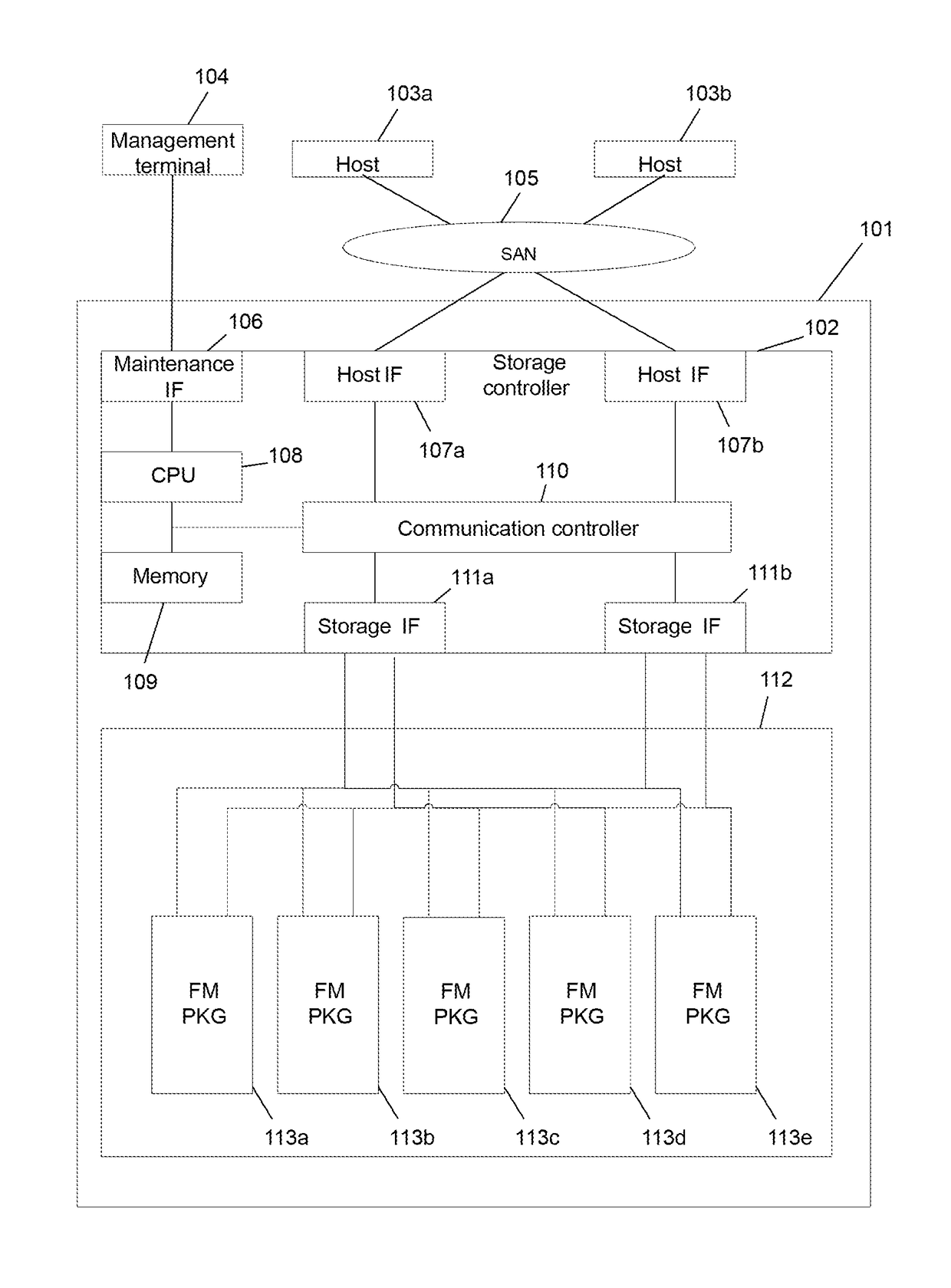Non-volatile memory device
a memory device and non-volatile technology, applied in the direction of memory adressing/allocation/relocation, instruments, input/output to record carriers, etc., can solve the problems of data logical invalidation, data rewrite performance decline, and the capacity of a flash memory device not being satisfied, so as to achieve the effect of suppressing the consumption of volatile memory
- Summary
- Abstract
- Description
- Claims
- Application Information
AI Technical Summary
Benefits of technology
Problems solved by technology
Method used
Image
Examples
embodiment 1
[0042]FIG. 1 shows a configuration of a computer system according to an embodiment.
[0043]The computer system includes a storage system 101, one or more host computers 103 (host computers 103a and 103b), and a management terminal 104. Each of the host computers 103a and 103b is coupled to the storage system 101 via a SAN (Storage Area Network) 105.
[0044]The storage system 101 includes a storage controller 102 and a plurality of flash memory storage apparatuses 113. In the drawings and in the following description, the flash memory storage apparatus 113 may be referred to as an FMPKG (Flash Memory Package). Moreover, while the present embodiment is provided with one storage controller 102, a redundant configuration which includes a plurality of storage controllers 102 may be adopted instead.
[0045]The storage controller 102 includes a CPU (Central Processing Unit) 108, a memory 109, a plurality of host IFs (Interfaces) 107 (host IFs 107a and 107b), a plurality of storage IFs 111 (stora...
embodiment 2
[0115]In Embodiment 1, an optimization method of a reclamation process involving classifying write frequencies and aggregating write destinations of classified data has been described. In the present embodiment, a method will be described in which physical areas that are write destinations are managed from a perspective of degradation degrees and wear leveling is realized by optimal matching of a write frequency and a degradation degree.
[0116]FIG. 13 shows a block degradation degree table.
[0117]The logical-physical translation information 306 includes a block degradation degree table 1301. The block degradation degree table 1301 includes a degradation degree 1302 for each block number 1302. The degradation degree is a quantification of a level of degradation of a block and may instead simply be, for example, the number of erases. Since it is known that degradation characteristics of a cell are not necessarily solely dependent on the number of erases, the degradation degree may inclu...
PUM
 Login to View More
Login to View More Abstract
Description
Claims
Application Information
 Login to View More
Login to View More - R&D
- Intellectual Property
- Life Sciences
- Materials
- Tech Scout
- Unparalleled Data Quality
- Higher Quality Content
- 60% Fewer Hallucinations
Browse by: Latest US Patents, China's latest patents, Technical Efficacy Thesaurus, Application Domain, Technology Topic, Popular Technical Reports.
© 2025 PatSnap. All rights reserved.Legal|Privacy policy|Modern Slavery Act Transparency Statement|Sitemap|About US| Contact US: help@patsnap.com



